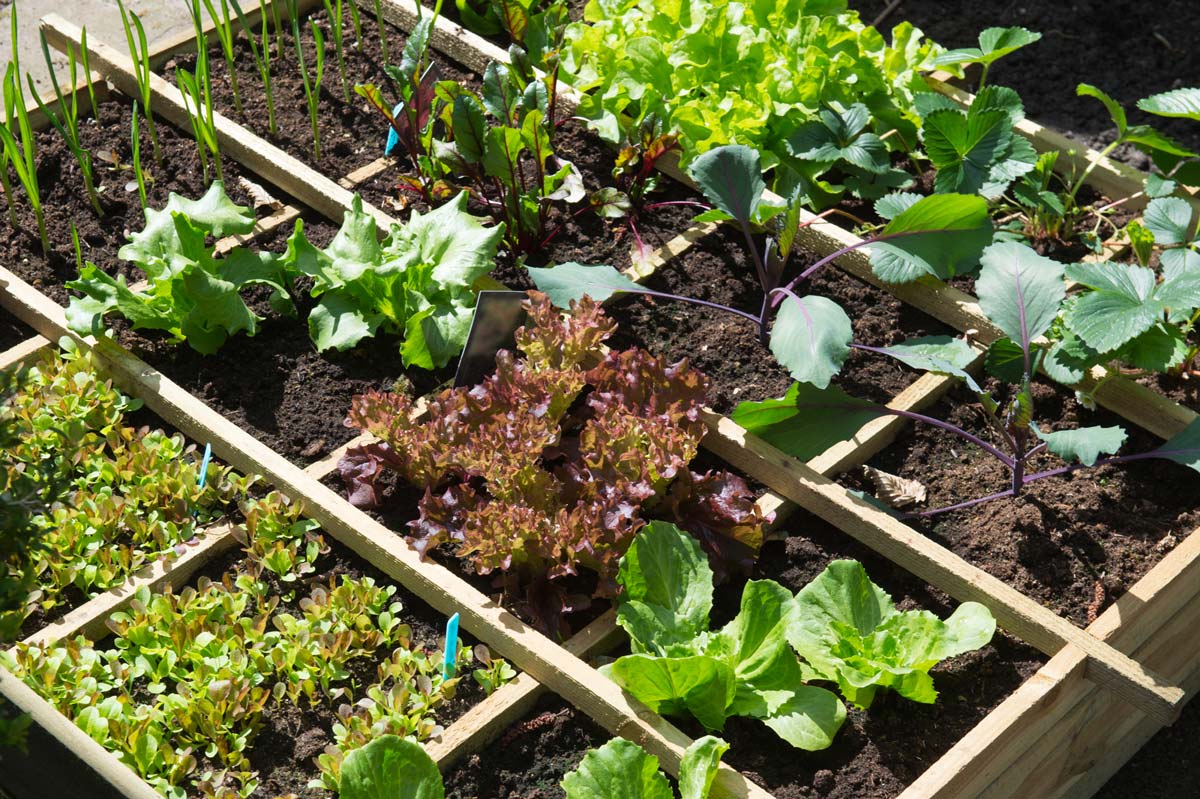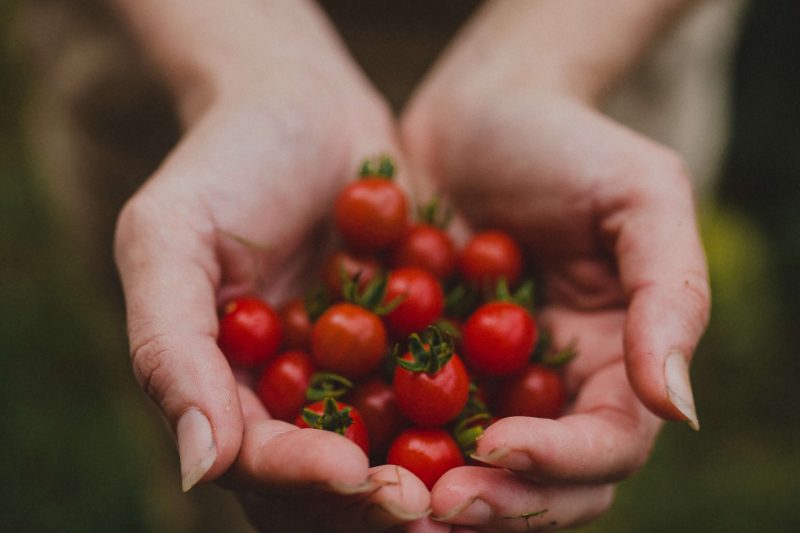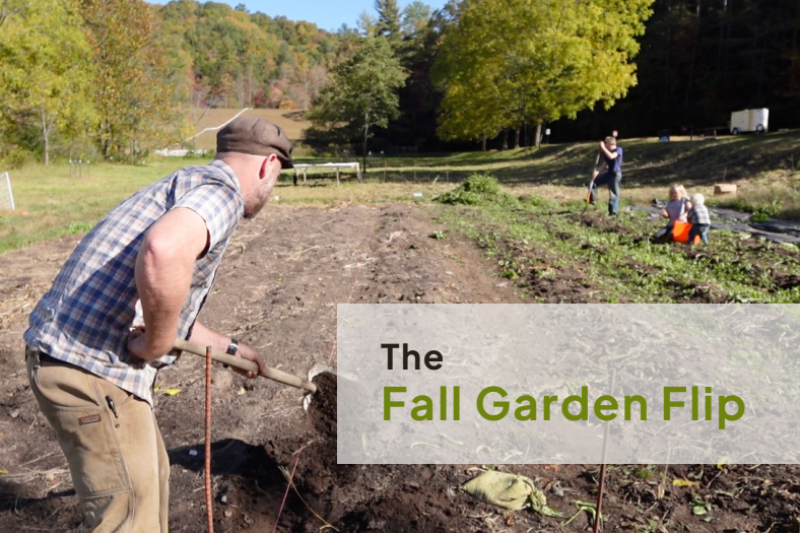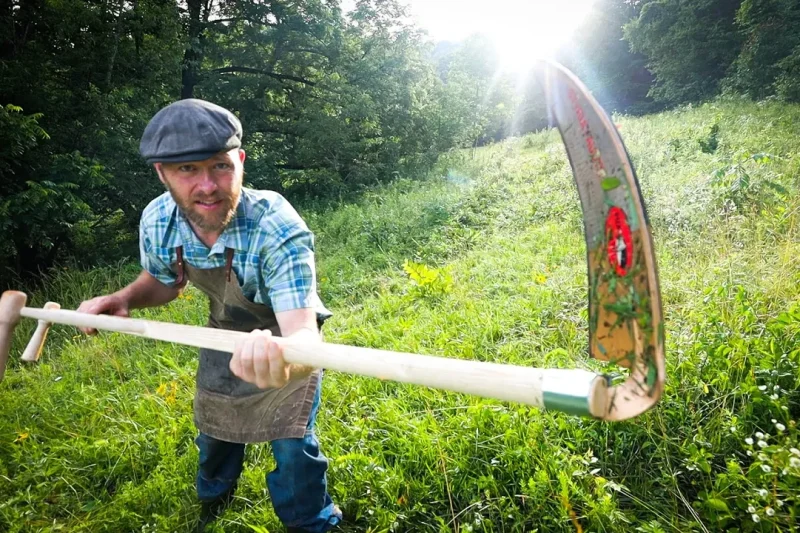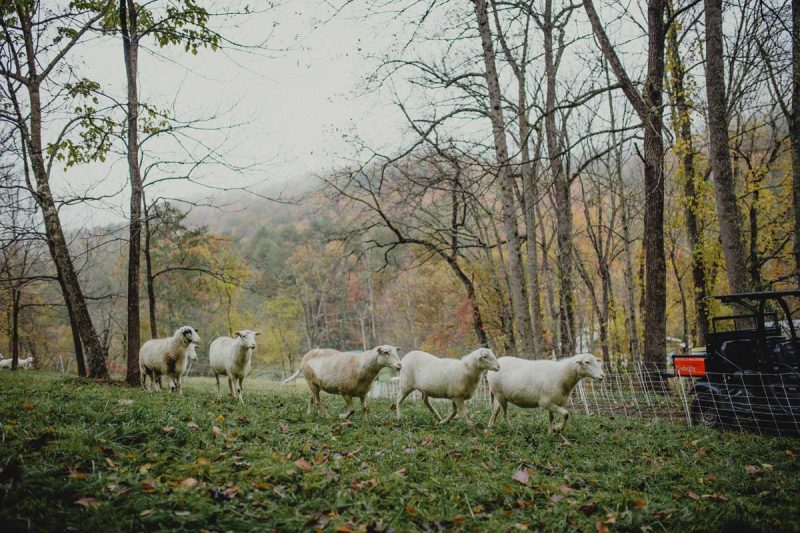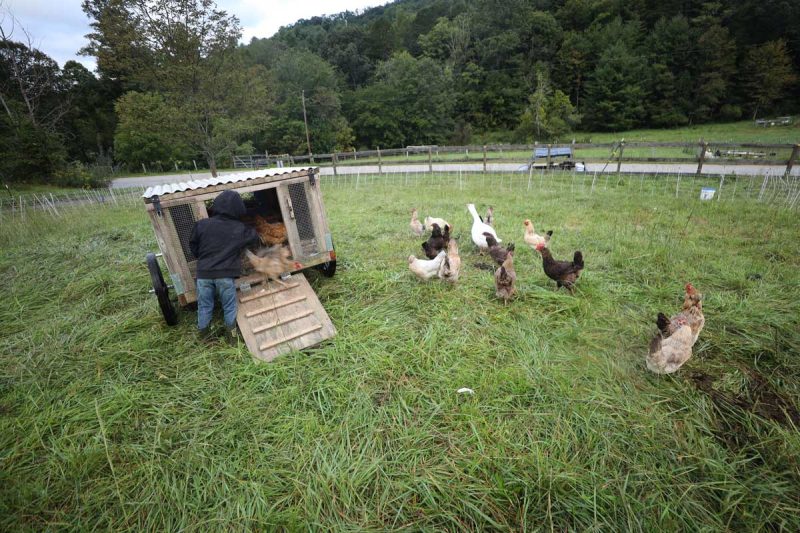If you are wondering how to start a garden from scratch or are concerned about the cost of gardening, then square foot gardening may be the right fit for you.
Square foot gardening can improve your harvest yields while using less space. And it’s a great way to help you plan a fast-growing vegetable garden for a quick harvest.
Learn how to plant a new garden using optimal spacing, healthy soil, and a mix of vegetables in a raised bed using the square foot gardening method.
Why We Use Square Foot Gardening
Really, so much of what’s become the norm in gardening has come from the original square foot gardening method started by Mel Bartholomew.
For example, it’s now common to use raised garden beds versus traditional rowed gardens. This eliminates tilling and decreases the need for weeding. Using raised beds came from the square foot gardening method.
This method also popularized the use of compost in garden soil and popularized the focus on soil health. Nutrient-rich soil is key to healthy produce.
We create our own compost to use in our raised beds. We even use chickens to help create and till compost for our garden. Using raised beds helps us to easily create healthy soil for a quick yield and a huge harvest.
We garden using all kinds of methods based on our space and what our land provides. But square foot gardening is an easy, dependable, low-maintenance method to grow more in less space.
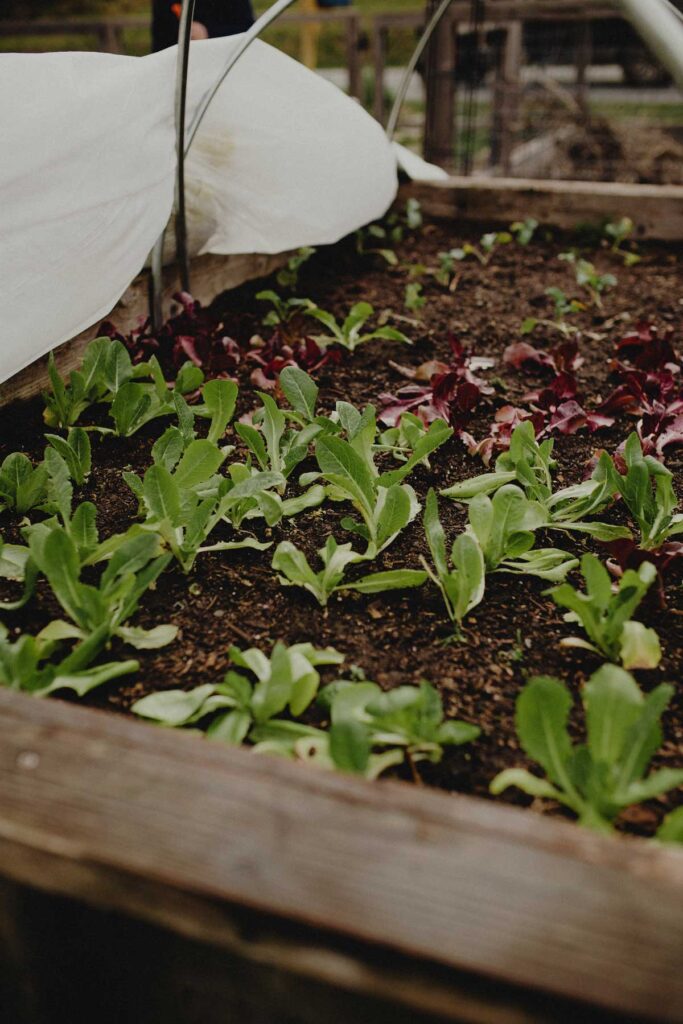
What Is the Square Foot Gardening Method?
Square foot gardening is a method of gardening where you use raised beds, usually four-foot by four-foot in size (we double this with our four-foot by eight-foot beds). The garden bed is then divided into 1-foot squares with a grid placed on top to visually delineate each square foot.
Instead of planting in rows like typical garden beds, you plant seeds in each square according to the recommendations for square-foot gardening.
When planting, you make a smaller grid in each square, and you plant either 1, 4, 9, or 16 plants in the square, depending on the size of the plant.
The square foot method of planting can be applied to any size of raised beds. There are many great raised garden bed plans that you can follow for step-by-step instructions.
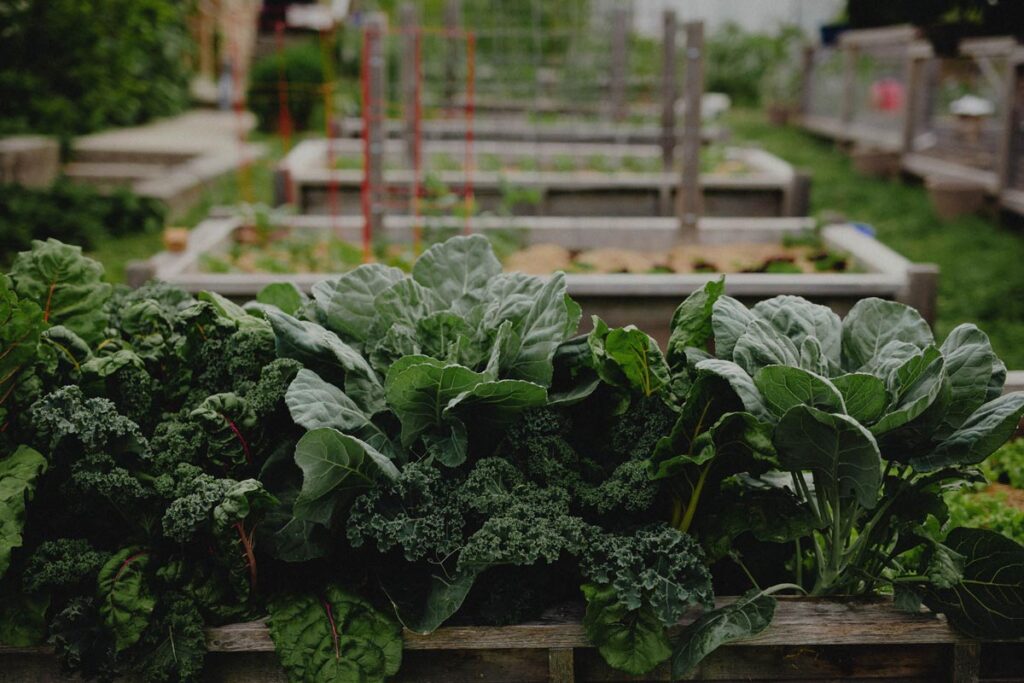
Benefits of Square Foot Gardening
Square foot gardening offers a simple and straightforward way to garden. It is a great way to start a garden. This method actually works and can help you raise food for your family, even if you’ve never gardened before.
- Easy to Manage and Maintain – Raised beds are easy to access and weed. You can even build tall beds to better reach the plants without spending as much time on your hands and knees. It also eliminates the need to weed large spaces in between garden rows.
- No Digging or Tilling – You don’t need to dig up a patch of earth for your garden. You can build your garden beds right on the ground.
- Saves Time – Reducing the number of weeds in the garden drastically saves time. Since your vegetable plants can be planted closer together, the plants choke out the weeds. Additionally, filling the raised beds with compost or the recommended soil mix helps you start your garden beds without needing to till up weeds or loosen compacted soil. There are fewer weeds to begin with.
- Saves Water – Square foot gardening reduces water waste. You can water just the raised beds without watering the space between garden rows like in traditional gardens. The loose soil in the raised beds retains water well. Also, adding drip irrigation in raised garden beds is easy.
- Easy to Plan – The square foot gardening plan is organized in squares. This makes it easy to plan what you could plant into each square. Mel Bartholomew has a square foot gardening book that helps you plan your garden. Square foot gardening focuses on variety and companion planting. For example, companion planting strawberries and asparagus creates an ideal growing situation for both plants.
- Great Soil – Add compost or the Mel Bartholomew soil mix into the raised beds and start with nutrient-rich soil. Or, make your own compost. Since you don’t have to walk on the soil in the raised bed, the soil stays loose and doesn’t get compacted down. This allows plants to flourish.
- Good Use of Space – Deep, nutrient-rich soil allows you to grow vegetables closer together, meaning that you need less garden space. You get a greater yield of harvestable food for the space you use. Even if you only have a small space, you can garden using this method.
- Easy to Rotate Crops – Add more compost to your raised beds yearly to replenish the nutrients. Then plan a rotation of plants in the squares for next year.
- Plant and Harvest Earlier – The soil in raised beds warms faster than the soil in the ground. This allows you to plant in early spring, sometimes as early as February. You can add PVC pipe arches and attach clear plastic to cover your raised beds to protect your plants against frost.
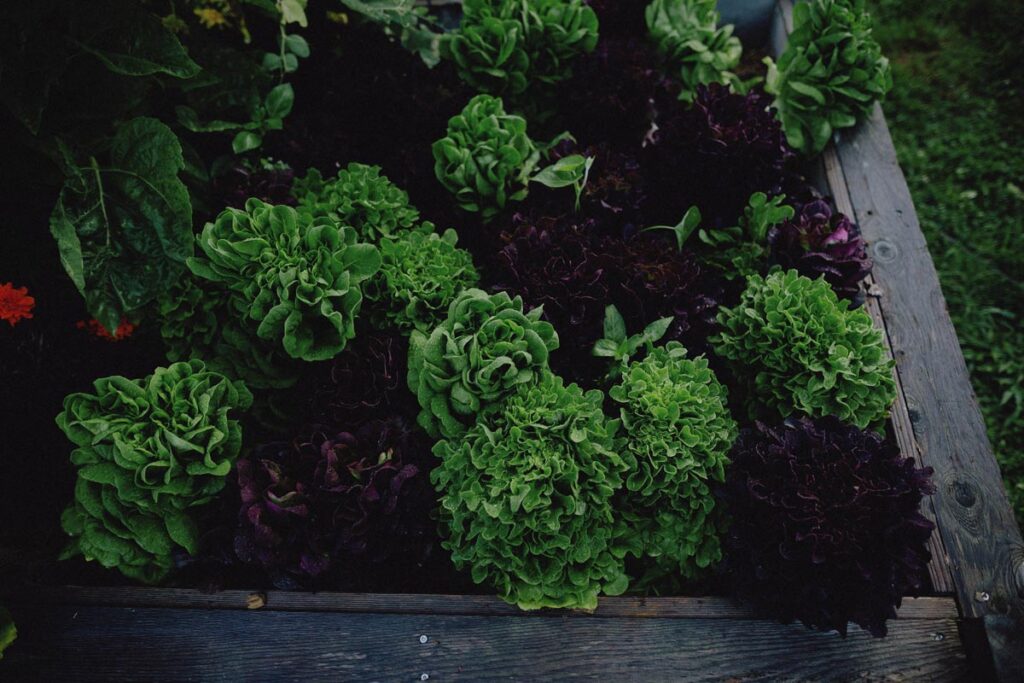
Supplies Needed
- Square Foot Garden Beds – Build raised garden beds (that link will take you to my raised bed plans). I make my raised beds to be 4 feet by 8 feet.
- Healthy Soil – To get started, you will need one cubic yard of wood chips, two cubic yards of garden soil, and another cubic yard of compost.
- A Square Foot Grid – Use tomato twine, bamboo or wooden doweling, lattice, or other materials to create a square foot grid on the top of each raised bed. You will need a measuring tape. You will also need nails if you plan to use twine.
- Plans – Create a plan for planting. Research which plants you would like to grow and how many plants can be planted in each square foot. Here are some quick charts for plant spacings to follow.
| Plant Type | Number of Plants per Square Foot |
| Vegetables | |
| Lettuce | 4 |
| Kale | 4 |
| Swiss chard | 4 |
| Collard Greens | 4 |
| Spinach | 8 |
| Tomatoes | 1 |
| Peppers | 1 |
| Broccoli | 1 |
| Cabbage | 1 |
| Yellow Squash | 1 |
| Zucchini | 1 |
| Pumpkin | 1 |
| Cucumbers | 0.5 |
| Watermelon | 0.5 |
| Cantelope | 0.5 |
| Plant Type | Number of Plants per Square Foot |
| Herbs | |
| Basil | 4 |
| Cilantro | 8 |
| Dill | 1 |
| Oregano | 1 |
| Parsley | 1 |
| Sage | 1 |
| Rosemary | 1 |
| Thyme | 4 |
- My recommended spacing for the more popular plants:
- 4 squares of lettuce, 16 lettuce plants
- 4 squares of swiss chard, 16 chard plants
- 4 squares of tomatoes, 4 tomato plants
- 4 squares of peppers, 4 pepper plants
- 3 Squares of broccoli, 3 broccoli plants
- 3 squares of cabbage, 3 cabbage plants
- 4 squares of squash, 4 squash plants
- 4 squares of cucumber, 2 cucumber plants
- 2 squares of melon, 1 melon plant
- Plant Starts – Sure, you can start your own seeds (we love using these DIY soil blocks for seed starting). But for beginners, or if you only have a few garden beds, it makes sense to buy plant starts at the store. These plants have already been grown to four weeks old, saving you the hassle of starting seeds, protecting them in a greenhouse, then hardening them off, and getting them ready for the big bad world. These can be easily purchased from your local garden, grocery, or hardware store.
- Access to Water – Make sure you place your raised beds in a spot that gets sun and in an area close to a water source.
- Garden Spade – Use a garden spade to plant your vegetable starts.
- Grass clippings or Straw – Adding a layer of mulch improves the soil by keeping moisture in and preventing weeds from growing before your plants grow larger.
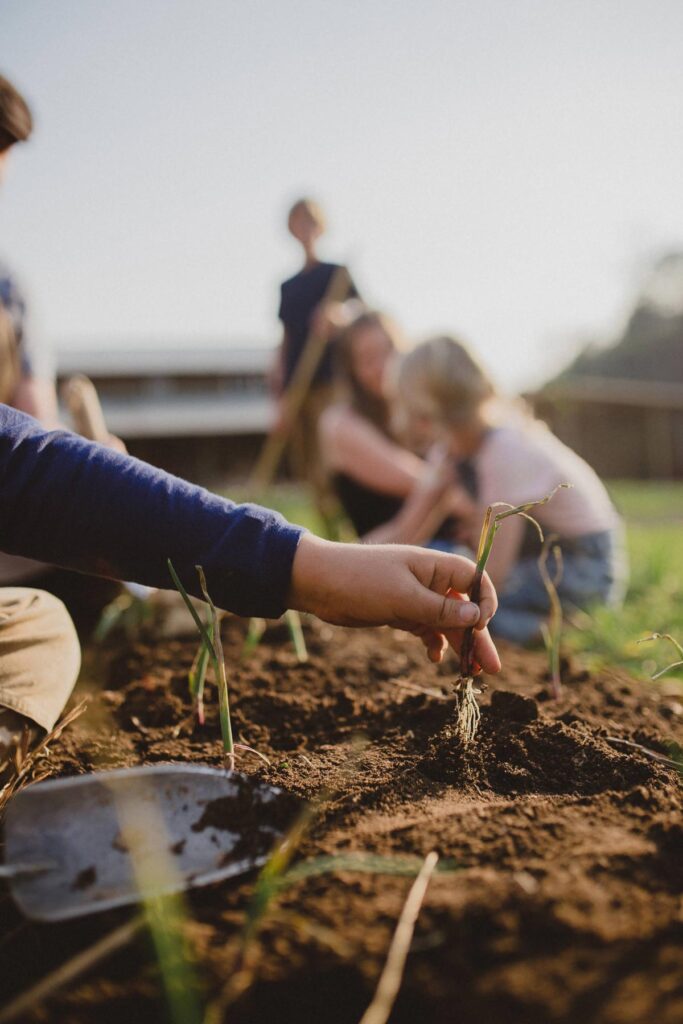
Step-By-Step to Planting Using Square Foot Gardening
- Build your own raised beds. Here are plans for building raised beds, and here is a free printable pdf complete with the detailed plans and even a cut list!
- Fill each raised bed. Use about 10” of rotting wood logs or one cubic yard of wood chips for the bottom layer. This is an inexpensive and relatively easy source of filler; plus, as the wood breaks down, it creates heat and will warm up your soil. Next, add 20” of garden soil. It takes about two cubic yards of garden soil to get started. It’s a lot, but you won’t have to buy it again. Check for local sources or deals at garden centers. Lastly, mix in a layer of compost. The square foot gardening method also recommends adding peat moss to the soil. Make sure you start with plenty of healthy garden soil and compost.
- Create a square foot grid. On the frame of the raised bed, measure and mark out a one-foot grid. Hammer in a nail halfway down at each one-foot mark. String tomato twine across the bed and tie each end to the nails. Do this in both directions across the frame to create one-foot squares above the soil. These lines will help with spacing out your plants correctly before planting.
- Plan the spacing of your plants. Plan out your garden based on the time of year. Check for the frost dates for your area and plant after the last frost unless you plan to cover your plants with plastic. If you make a cover for your raised beds, you can plant in some areas earlier, even as early as February. You can attach PVC pipe hoops crisscrossed across the garden beds as frames to cover your plants. Pro-tip: Use agribon to cover your plants for early planting. It is breathable. It lets air and water in while keeping the temperature up and frost out. You would need about 12 feet of agribon for a 4-foot by 8-foot garden bed.
- Plant your plant starts. Once you have a grid in place, a plan, and your plant starts, lay out your plant starts in each square, spaced according to the recommendations. After you lay out your plant starts, gently plant each start, fully covering the base of the plant.
- Add a layer of mulch. Cover your soil with grass clippings, leaves, or organic straw. I highly prefer grass clippings as they are generally readily available from the yard, add nitrogen to the soil, break down easily, and can be moved around should you have to weed. Applying a mulch like this suppresses most weeds, holds moisture in your soil and prevents soil runoff. And it eventually adds organic matter to your soil when it breaks down. I’d recommend just a few inches of grass clippings on top of the soil.
- Maintain your garden. Generally, your garden will need about 1 inch of water per week. But check your garden and make sure the soil stays moist. Raised beds are extremely easy to maintain, especially if you put down a good layer of grass clippings. You barely have to water because of the mulch, and if any weeds do pop up, they are easily pulled or hoed as you don’t have to bend over much.
Now you get to sit back and enjoy the fruits of your labor! For more gardening tips, be sure to check out the other posts below.
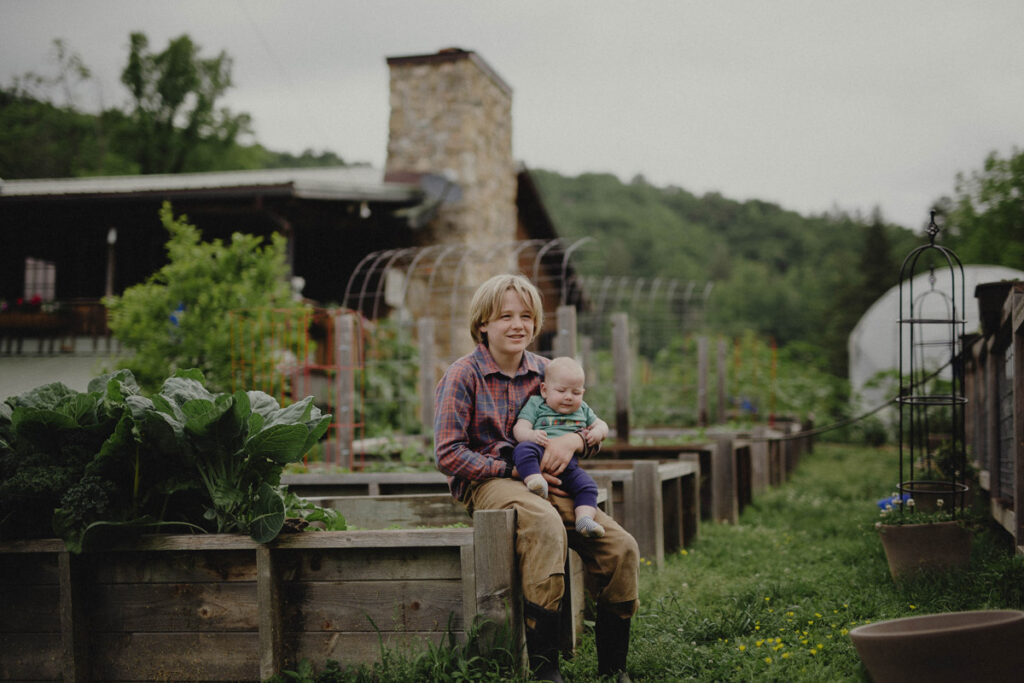
More Posts You May Enjoy
- How Much Does it Cost to Grow a Garden?
- How to Braid Garlic and Onions
- Hügelkultur Bed – A Natural Way to Garden
- Companion Planting with Asparagus and Strawberries
- Using the Permaculture Approach for Your Chicken Flock
- Chickens in Garden Spaces to Till and Fertilize
- Raised Garden Bed Plans
- Planting Garlic the Easy Way
- Your Land Will Tell You How To Homestead

